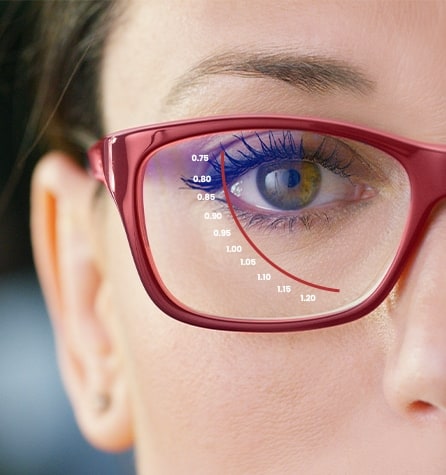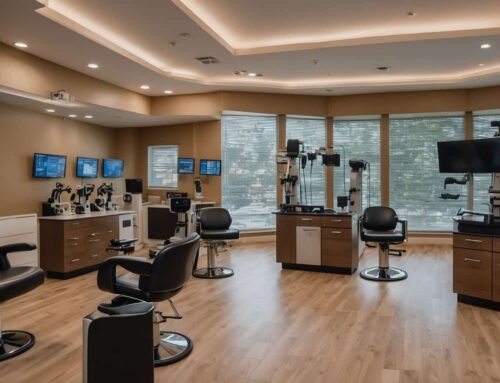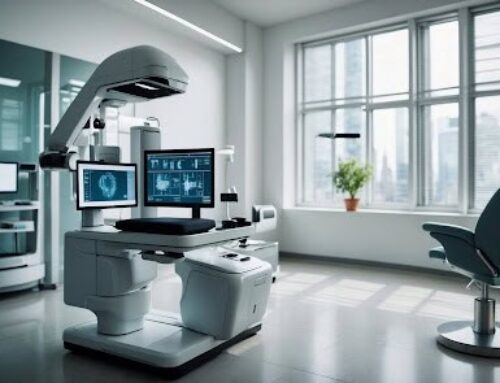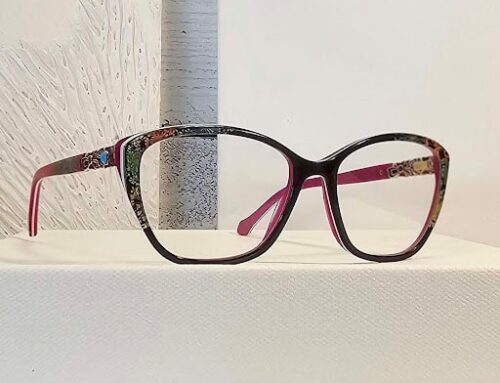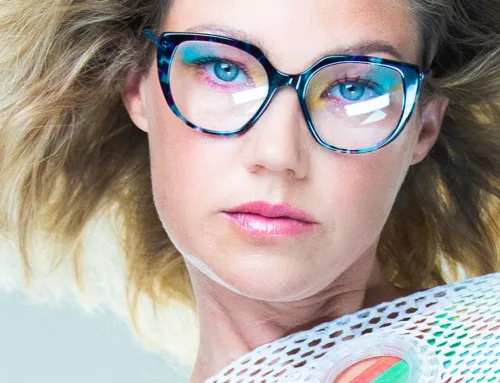As an essential accessory for many, eyeglasses do more than just help us see clearly; they are a fashion statement, a tool for protection, and for some, a necessity to perform daily activities. In this guide, we will explore the various types of eyeglass lenses, shedding light on their unique properties, purposes, and the benefits they offer. This knowledge will empower you when choosing the perfect pair of glasses, ensuring your choice meets both your aesthetic preferences and vision needs.
Understanding the types of eyeglass lenses is crucial for several reasons.
Firstly, it allows you to make an informed decision about your eye care, ensuring that the lenses you choose can cater to your specific visual needs. Whether you have nearsightedness, farsightedness, astigmatism, or require multifocal lenses, each lens type serves a different purpose.
Secondly, having knowledge of different lens types can help you understand their unique features such as anti-glare, scratch resistance, or UV protection, which can significantly enhance your eyewear’s durability and your visual comfort.
Lastly, given that eyeglasses can be a significant investment, understanding the lens types can ensure you make a cost-effective decision that doesn’t compromise on quality or functionality.
Single Vision Lenses
Single vision lenses, as the name suggests, have a single prescription across the entire surface of the lens. They are the most straightforward and common form of eyeglass lenses used to correct vision. Single vision lenses are primarily used to address either nearsightedness (myopia) — difficulty in seeing distant objects clearly, or farsightedness (hypermetropia) — difficulty in seeing close objects clearly.
The simplicity in design and functionality of single vision lenses make them a suitable choice for people of all ages. For younger individuals or school-aged children who often struggle with nearsightedness, single vision lenses provide the necessary correction, enabling them to see distant objects more clearly. This can significantly improve their academic performance, particularly in visually oriented classes like science or art.
For adults experiencing farsightedness due to the natural aging process (presbyopia), single vision lenses can provide clear vision for near tasks such as reading, using a computer, or any other close-up work. This can greatly enhance one’s quality of life and productivity at work.
However, it’s essential to note that single vision lenses may not be suitable for everyone. For individuals who have multiple vision problems, such as both nearsightedness and farsightedness, different types of lenses, such as bifocals or progressives, may be required. Your optician can provide a comprehensive eye exam and make the best recommendation based on your specific vision needs.
Bifocal Lenses
Bifocal lenses, as the term suggests, have two distinct optical powers. Benjamin Franklin, who himself suffered from both nearsightedness and farsightedness, is credited with the invention of bifocal lenses. This ingenious innovation allows for the correction of both vision impairments using a single pair of eyeglasses.
Functionality of Bifocal Lenses
The upper part of a bifocal lens corrects for distance vision, while the lower part aids in near vision. A noticeable line separates these two sections. When the user looks straight ahead or upwards, they view through the distance part of the lens. When they look downwards, such as to read, they look through the near part of the lens.
Advantages of Bifocal Lenses:
Clarity
One of the significant advantages of bifocal lenses is the clarity they offer. Users can enjoy clear vision at both distance and near zones. This dual functionality makes them versatile for various activities, from driving to reading, without the need for multiple pairs of glasses.
Convenience
In addition to optical clarity, bifocal lenses offer unrivaled convenience. With only one pair of glasses needed for different vision requirements, users don’t have to switch between multiple pairs, making these lenses a practical solution for day-to-day wear. Moreover, the distinct line between the two focal areas allows users to control which part of the lens they want to look through, offering an added level of control and convenience.
Trifocal Lenses
What are Trifocal Lenses?
Trifocal lenses, like bifocals, are multifocal lenses developed to correct more than one vision problem. These lenses have three focal points, hence the name “trifocal.” They are designed to correct near vision, intermediate vision (arm’s length vision), and distance vision. This third viewing area is what sets them apart from bifocal lenses. The sections in trifocal lenses are divided by visible lines, with the top portion for distance vision, the middle for intermediate vision, and the bottom for near vision.
The Purpose of Trifocal Lenses
Trifocal lenses aim to deliver a complete visual experience by addressing the full range of vision impairments. By incorporating a segment for intermediate vision, trifocal lenses cater specifically to the visual needs of those who spend significant time viewing objects at arm’s length, such as working on a computer, viewing the dashboard while driving, or reading sheet music. The intermediate section bridges the gap between near and distance vision, creating a smoother, more natural transition between the different zones of the lens.
The Benefits of Trifocal Lenses
One of the significant benefits of trifocal lenses is their ability to provide clear vision at all distances. This makes them exceptionally versatile, catering to a variety of different daily tasks and activities. Moreover, the smooth transition between the lens sections makes for a more comfortable viewing experience, with less eye strain and fatigue, particularly for those who frequently switch between near, intermediate, and distant tasks.
Who Can Benefit From Trifocal Lenses?
Trifocal lenses are typically recommended for individuals suffering from presbyopia, a condition that affects your eye’s ability to focus on nearby objects and is often age-related. People with presbyopia who also need correction for distance vision can find trifocal lenses especially beneficial. Offering a solution for near, intermediate, and distance vision correction in one pair of glasses can make day-to-day life considerably more convenient and less disrupted by the need to switch between different pairs of glasses.
Progressive Lenses
What are Progressive Lenses?
Progressive lenses, also known as “no-line bifocals,” offer a more modern solution for those needing correction for multiple vision problems. Similar to trifocals, these lenses cater to near, intermediate, and distance vision. However, the key differentiator is the seamless transition between these zones, with no visible lines dividing them. The lens’s gradient effect starts with the prescription for distance at the top, gradually adjusting to intermediate in the middle, and finally to near vision at the bottom.
Progressive Lenses Design
The design of progressive lenses mimics the natural focusing ability of the eye, delivering a more dynamic and flexible visual experience. Their innovative design also means they look just like regular eyeglass lenses because they don’t have the visible dividing lines found in bifocal or trifocal lenses. This gives them an aesthetic advantage as they deliver multifocal vision correction without broadcasting the need for reading glasses.
Features of Progressive Lenses
Progressive lenses come with a host of unique features. One is the absence of an image jump, a common issue with bifocal and trifocal lenses. In these traditional multifocal lenses, the abrupt change between different prescription zones can cause images to appear to jump as the eye moves across the dividing line. In contrast, progressive lenses offer a smooth transition between the zones, eliminating this problem. Another feature is the wide field of vision. Progressive lenses provide a broader viewing area for each vision zone, especially the intermediate zone, which is beneficial for modern digital activities like using a computer or smartphone.
Progressive Lenses and Presbyopia
Progressive lenses are an excellent option for people with presbyopia, a common age-related eye condition. As we age, our eyes’ natural lens becomes less flexible, making it harder to focus on close objects. By offering a seamless progression of multiple lens powers for all viewing distances, progressive lenses provide presbyopic patients with the ability to see clearly at all distances, much like the natural vision they enjoyed before the onset of presbyopia.
The Ideal Candidate for Progressive Lenses
Progressive lenses are ideal for anyone needing correction for near, intermediate, and distance vision. This includes individuals suffering from presbyopia who also have nearsightedness or farsightedness. These lenses are especially beneficial for active individuals or professionals who frequently shift their focus between close-up work and distance viewing. The seamless transition of progressive lenses facilitates these changes in focus without the need for multiple pairs of glasses, making them a convenient and aesthetically pleasing choice.
Additional Features for Lenses
Anti-Glare Coating
Anti-glare, also known as anti-reflective coating, is a special layer applied to the surface of the lenses to reduce glare. Glare occurs when light bounces off the lens surface, causing distractions and reducing the clarity of vision. This coating allows more light to pass through the lenses, enhancing visual acuity and reducing eye strain. It’s particularly beneficial for people who spend a lot of time working on computers or driving at night, as it minimizes the glare from oncoming headlights or screens.
Scratch-Resistant Coating
Eyeglass lenses are prone to scratches, which can affect vision and the overall appearance of the glasses. Scratch-resistant coating is a clear film applied to the lens surface to make it more durable and resistant to scratching. While this coating doesn’t make the lenses completely scratch-proof, it significantly minimizes the likelihood of scratches, prolonging the lifespan of your glasses and keeping your vision clear.
UV Protection
Excessive exposure to ultraviolet (UV) rays can cause damage to the eyes, leading to conditions like cataracts and macular degeneration. UV protection in eyeglasses involves a special treatment that blocks harmful UV rays from reaching your eyes. This feature is especially important for individuals who spend a lot of time outdoors. UV protection is often incorporated into sunglasses, but it’s also available for clear prescription lenses, ensuring your eyes are protected no matter what type of eyewear you choose.
How to Choose the Right Lenses
Choosing the right lenses for your eyeglasses can profoundly impact your quality of vision and comfort. Consider the following tips based on lifestyle and vision needs to make the best choice:
- Identify Your Primary Need: Your primary vision need largely determines the type of lens you should choose. If you primarily struggle with near or distance vision, single vision lenses could be sufficient. However, if you frequently switch between near and distance tasks, you might benefit from multifocal lenses such as bifocals, trifocals, or progressive lenses.
- Consider Your Lifestyle: Your daily activities should also influence your lens choice. For instance, if you work on a computer or perform tasks at arm’s length, you might benefit from trifocal or progressive lenses, which include a zone for intermediate vision.
- Think About Comfort: Some people find the visible line in bifocals or trifocals distracting, while others enjoy the clear division between the different vision zones. If you prefer a seamless transition between the zones, progressive lenses might be the best choice.
- Don’t Neglect Lens Coatings: Depending on your lifestyle, you might benefit from certain lens coatings. If you spend a lot of time outdoors, UV protection can protect your eyes from harmful rays. If you work on a computer or drive at night, an anti-glare coating can reduce eye strain. If you’re prone to scratching your glasses, a scratch-resistant coating can prolong their lifespan.
- Consult Your Optician: Your optician can provide personalized recommendations based on a comprehensive eye exam. They can help you understand your specific vision needs and match them with the right lenses and features.
Opticians: Your Ally in Achieving Clear Vision
Opticians play a fundamental role in your eye care journey, providing expert advice and assistance in selecting the perfect eyeglasses for your specific needs. They are trained professionals who understand the intricacies of different lens types and can guide you in making an informed choice.
At Spectacular Eyewear, our dedicated team of opticians is always ready to serve you. We take the time to understand your unique vision requirements, lifestyle, and aesthetic preferences. Whether you need single vision lenses for nearsightedness or farsightedness, or multifocal lenses for more complex vision issues, we can recommend the best options that perfectly align with your needs.
Moreover, our opticians understand that eyeglasses are not just a functional necessity but also a fashion accessory. Hence, we offer a diverse range of frames in different styles, colors, and materials. We help you choose a frame that enhances your facial features, complements your style, and fits comfortably.
In addition to providing expert guidance, our opticians at Spectacular Eyewear also ensure you receive the highest quality lenses. We understand that your glasses are an investment, and we strive to provide you with durable, comfortable, and effective eyewear that offers the best value for your money.
So, if you’re in search of the perfect eyeglasses, look no further. Let our opticians at Spectacular Eyewear assist you in achieving clear vision in style.
Remember, the goal is to enhance your visual comfort and protect your vision, so take your time to explore your options and make an informed decision.
Understanding the different types of lenses and their features is crucial to optimizing one’s visual experiences and preserving eye health. From bifocal lenses that cater to near and distance vision, to trifocal lens catering to near, intermediate, and distance vision, and the seamless transition of progressive lenses, there’s an array of options to meet varied visual needs. Furthermore, additional features like anti-glare coating, scratch-resistant coating, and UV protection further enhance the functionality and durability of eyewear. Identifying personal visual needs, considering lifestyle, and seeking professional advice will ensure the choice of the most suitable lenses. Ultimately, investing in the right lenses can significantly improve one’s quality of life, making daily tasks more efficient and enjoyable.

